
Craven Killing From Above In Myanmar
“When We See The Planes”, an art and photography installation staged by the Myanmar artistic collective“A New Burma”, is“raising awareness about the violations of international law...in shedding light on the lived experiences of those affected, and in commemoration of those who are killed” from the regime's widespread and intensifying aerial bombardments.
On the seven-month anniversary of the stunning Operation 1027 insurgent offensive launched by the Three Brotherhood Alliance, the State Administration Council (SAC) coup regime's rising and largely indiscriminate use of air power comes amid the dramatic territorial gains made by multiple revolutionary forces in Shan, Karenni, Karen, Kachin and Rakhine states.
Prominent Myanmar think tank Nyan Linn Thit Analytica tracks the regime's air strikes across Myanmar, a bombardment its fine-point research shows has been steadily rising in intensity and accuracy. In the first four months of 2024, the regime launched 819 airstrikes, or an average of six per day, resulting in the deaths of 359 civilians and the wounding of 756 others.
50 religious buildings, 38 schools and 11 health facilities were destroyed over the same four-month period. Compare this to the total number of documented airstrikes in previous years: 85 were launched in 2021, 339 in 2022 and then surged to 1,228 in 2023, Nyan Linn Thit Analytica's research shows.
The resistance Telegram channel Enemy Air Route (EAR) currently informs the public of sightings and vector directions of various Myanmar Air Force (MAF) aircraft. EAR also publishes useful graphics of the locations of airbases and the flying times of various craft to their target zones.
It also has granular detail on the regime's use of specific weapons systems such as 23mm and 30mm cannons, S-8 80mm rockets, KAB 500 guided bombs and 250-kilogram gravity bombs.
Much of this technical information was provided by former MAF officers who joined the Civil Disobedience Movement (CDM), although established ethnic armed organizations (EAOs) had a good awareness of the regime's capacity given the steadily increasing use airpower in Kachin and northern Shan states since 2011 and Rakhine and Chin from 2019.
What has been evident to many observers is the relative inaccuracy of much MAF close-air support (CAS) and the dearth of forward air observers (FAO) attached to infantry units.
Still, the accuracy of air strikes has dramatically improved since the 2021 coup. That's been brutally seen in the night strike on a concert in Hpakant in October 2022, the murder of at least 165 civilians at Pa Zi Gyi west of Mandalay in April 2023, the strike on an internally displaced person (IDP) camp in Kachin in October 2023 and the Saint Peter Baptist Church bombing in Sagaing in January this year that killed 17 civilians.

China tariffs won't make America great again

Dyson spheres and the quest for alien megastructures
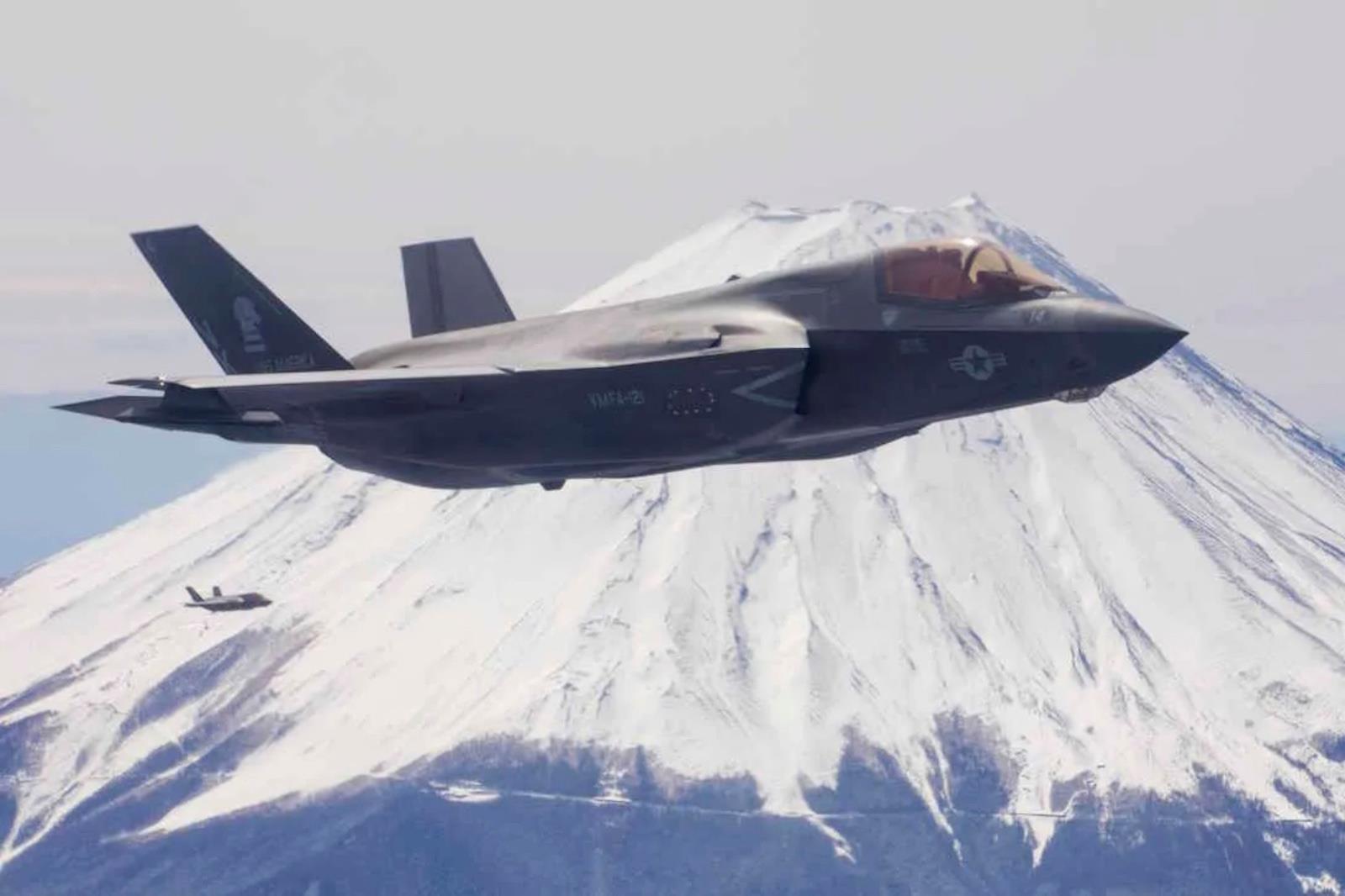
A pivotal moment for Japan's national defense
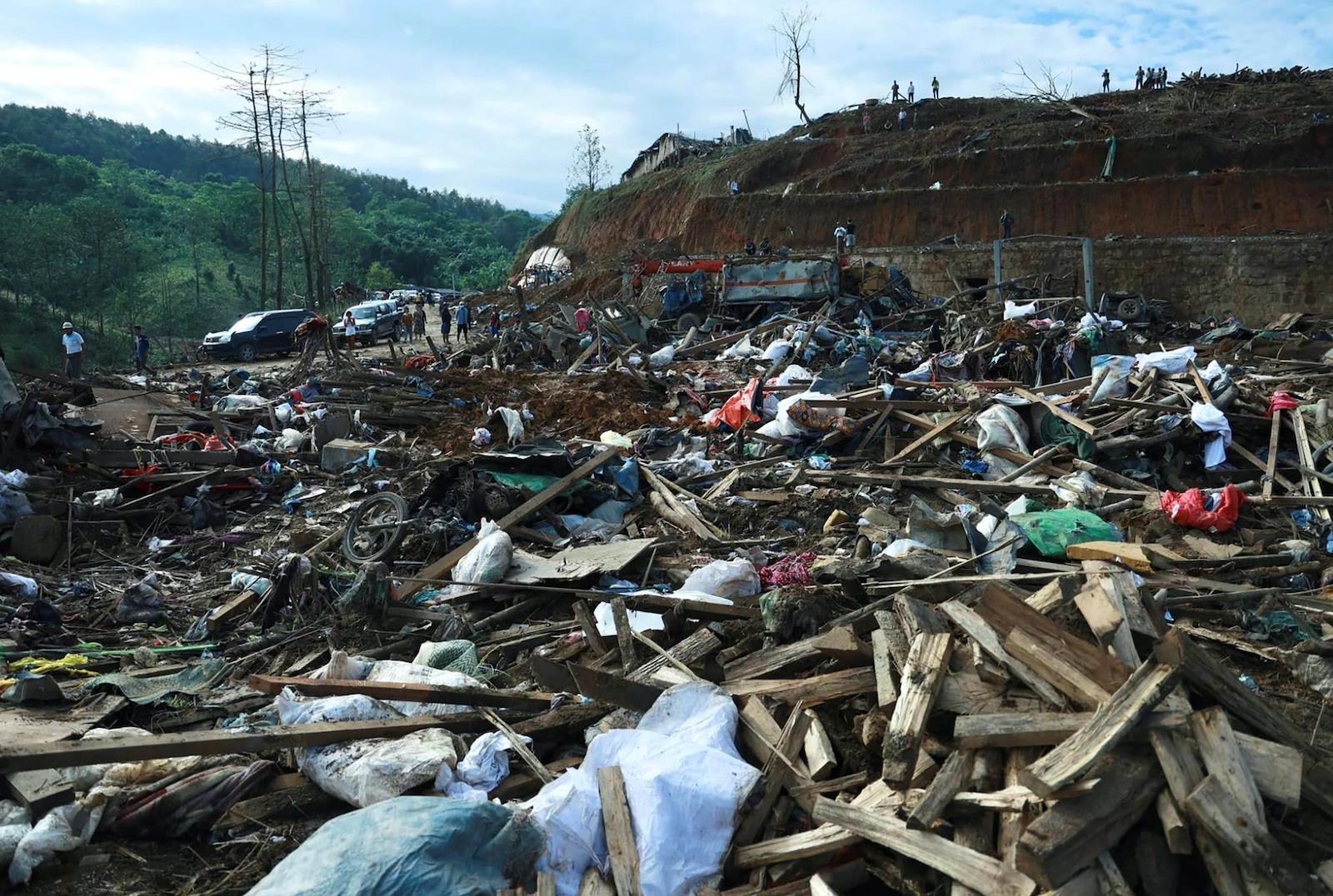
The aftermath of a Myanmar military bombing of a Kachin internally displaced person camp, October 2023. Image: X Screengrab
In recent weeks, MAF air strikes on civilians in Tonzang in Chin state have been particularly intense, as have attacks on civilians in Saw Township of Magwe Region .
The MAF's recent airstrikes have used several“newer” aircraft, not least the Chinese-manufactured Harbin Y-12 transport plane , a slow-moving twin-propeller craft that can fly low over resistance forces or civilian targets before dropping mortar rounds.
Those strikes may be less accurate than precision-guided ordnance, but if the strategic objective is to sow terror, the Chinese-made planes serve the regime's purpose.
EAR also reports flights of light aircraft such as the British-manufactured BN2 Islander and American-made Beechcraft 19 and ATR-72, though these have not yet been implicated in combat roles.
The Russian-made Yak-130 light attack aircraft is still widely used, although the Mi-35 helicopter gunship seems to have a reduced presence in some battle zones as resistance forces augment their anti-aircraft capacities.
This included crowd-sourcing for heavy machine guns, notably by the Karenni National Defense Force (KNDF), which shot down a Yak-130 in November after an earlier fund-raising drive.
Myanmar people in exile also staged“Project Dragonfly” to raise money to combat airstrikes. New terms have entered the Myanmar vocabulary: a“grilled bird” is a shot-down fighter jet while a“grilled dragonfly” is a downed helicopter.
The regime's intensifying air strikes invalidate much of the 2022 logic that the Russian invasion of Ukraine would starve the MAF of spare parts and replacements. If maintenance issues have been an issue, then they haven't markedly affected operational tempo.
Ordnance likewise doesn't appear to have diminished. Pilot morale and commitment to the SAC cause, including engaging in widespread and systematic war crimes against civilian targets that could one day lead to criminal prosecution, has also not seemingly deterred many. Measures to limit supplies of jet fuel have also seemingly not had any impact, at least not yet.
Some activists tried to portray the 76th-anniversary celebration of the MAF's creation in December as a mark of the SAC's desperation, as it was held in the safety of Naypyidaw Airport and had fewer aircraft than in previous years.
That wasn't clearly the case, though. At the event, SAC leader Senior General Min Aung Hlaing praised his pilots for the“effectiveness and efficiency” of their strikes and promised to provide them with the hardware they needed to defeat the“enemy.” (Two recently supplied Russian Su-30 multirole fighter planes were on display at the“celebration.”)
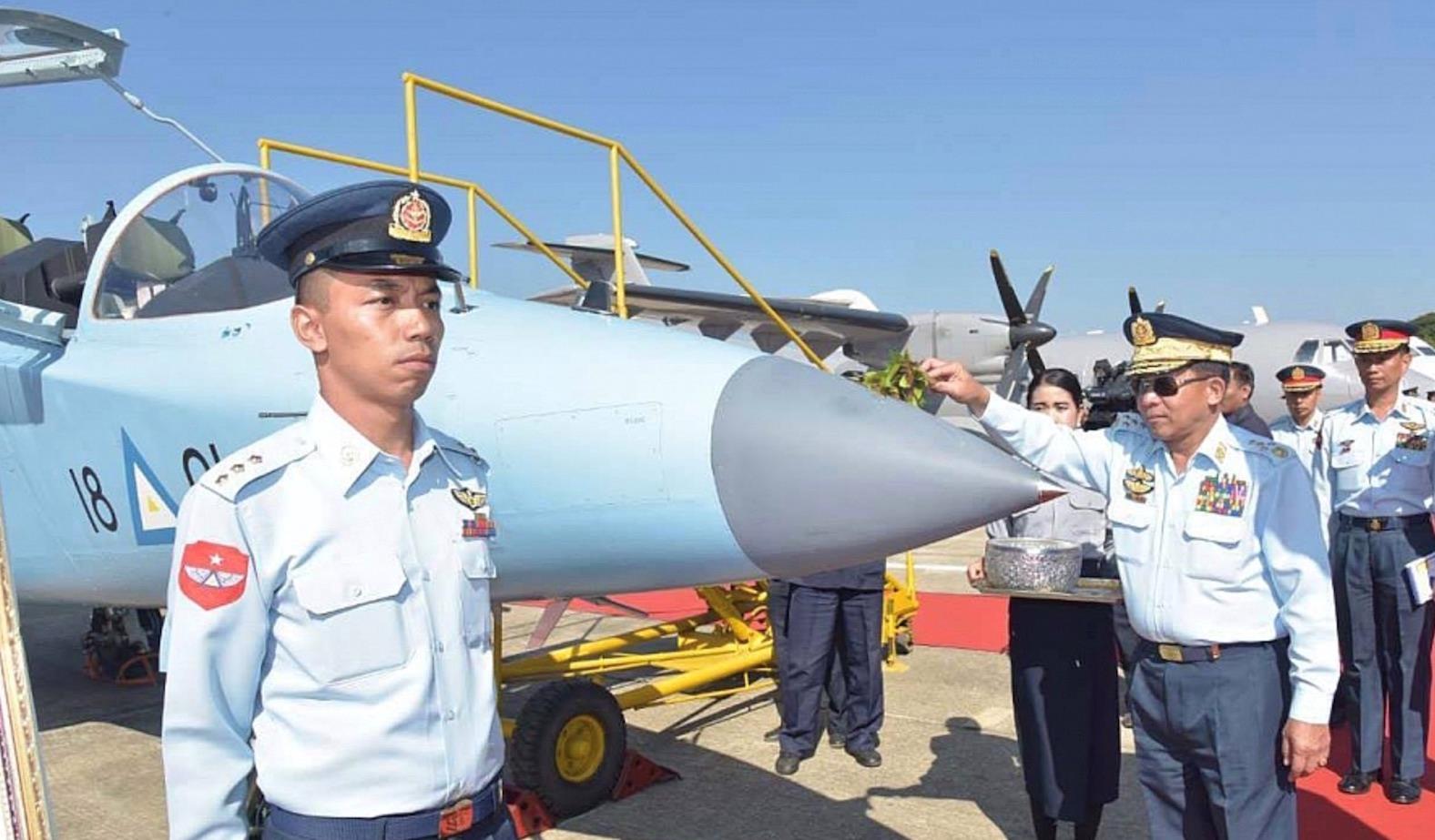
Senior General Min Aung Hlaing inspects a MAF plane in a file photo. Image: X Screengrab
At the same time, the SAC's armed forces have recently dramatically increased their use of unmanned aerial vehicles (UAVs). While tactical surveillance drones have been deployed by infantry units for some time, higher capacity systems are appearing for deeper surveillance, bomb damage assessment and more accurate artillery targeting against resistance forces and civilian targets.
Chinese-made drones such as the CH3A, Sky O2A and the Yellow Cat A2 are now all in service, as is the Russian Orlan 10E. (There are also unconfirmed reports that the Israeli-made Elbit Skylark surveillance drone has been deployed.) However, only the CH3A is capable of dropping mortar rounds, though the SAC is believed to be investing in more weaponized UAC capacity.
Many SAC drone strike videos are uploaded on social media, including on Facebook, Telegram (a favorite of the SAC and its supporters) and YouTube. One pro-military Facebook page, entitled“Tactics for Myanmar Police”, features a number of Myanmar military strike videos, with the 1970's“Mr Blue Sky” song by Electric Light Orchestra (ELO) incongruously used as a soundtrack on some of the clips.
In one video, the uploader admits the purposeful targeting of civilians, writing“The military introduced the terrorist villagers with DI (Defense Industries) produced drop bomb”, suggesting that domestically manufactured ordnance is being deployed.
The Myanmar resistance has multiple drone units of its own, most prominently Federal Wings, but also the evocatively titled Alpha Bat Drone Army. The latter was used in an April attack on the SAC's South Eastern Command in Mawlamyine, which was initially believed to have seriously wounded regime number two Vice Senior General Soe Win.
The Mandalay People's Defense Force (PDF), one of the resistance groups involved in Operation 1027, appears particularly adept at drone warfare, with many of its operators known to be young women.

Sign up for one of our free newsletters
- The Daily ReportStart your day right with Asia Times' top stories AT Weekly ReportA weekly roundup of Asia Times' most-read stories
The UAV attack on Naypyidaw airport in April , which resulted in little damage apart from the blow to the SAC's credibility, was a morale booster launched by the Kloud Drone Team and Lethal Prop Weapon Team.
As part of Operation 1027, the 3BA deployed hundreds of what the SAC calls“drop bombs” to attack army positions near the China-Myanmar border trade gate at Jin San Jiao, reportedly destroying 100 trucks in the attack and suggesting a dramatically increased destructive capacity for the resistance. Accuracy too has improved, as the assassination of five military and civilian officials in Myawaddy in September proved.
Yet the drone dimension will likely be marked by the same asymmetry of so much of the post-coup conflict. The EAO and PDF resistance will continue to rely on pluck, ingenuity, spirit and purpose to manufacture increasingly sophisticated craft UAVs with 3-D printer-produced wings, payloads and improved software.
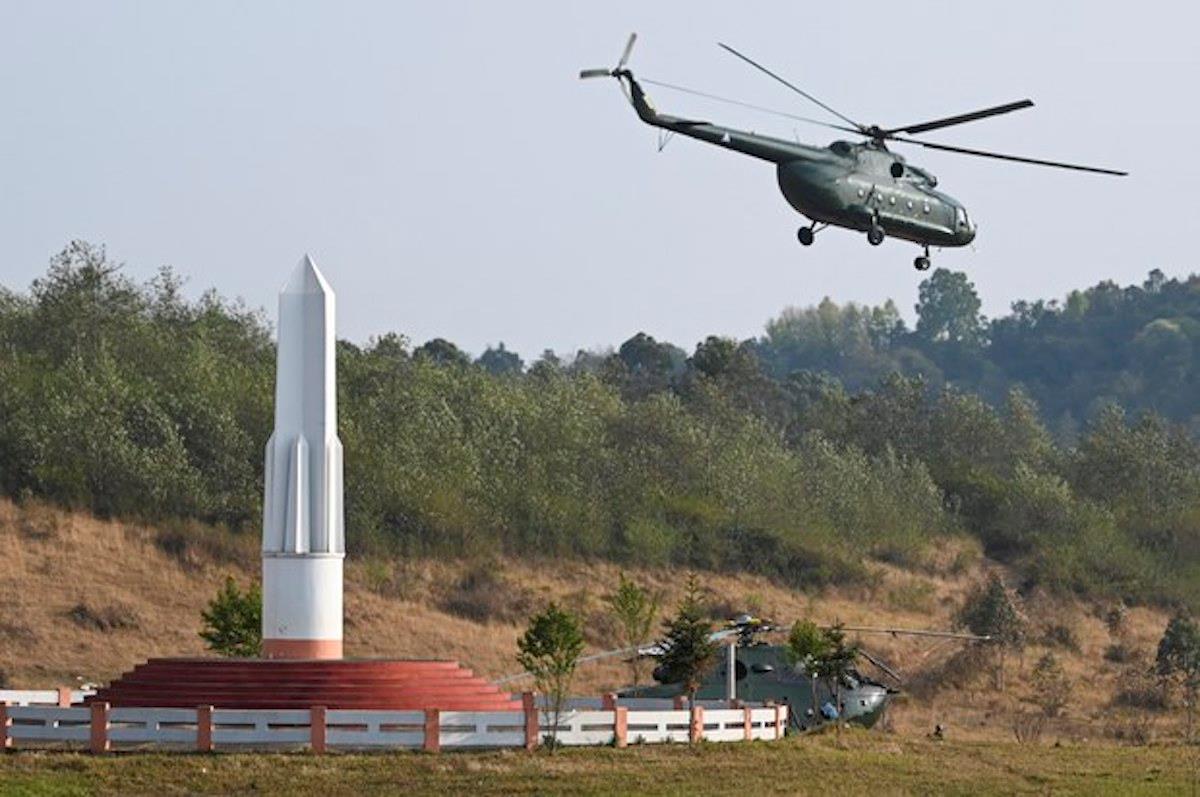
Myanmar's military regime is increasingly reluctant to use its helicopters in battle zones. Image: X Screengrab
The SAC, on the other hand, will look to foreign-sourced systems, some of which are being developed and deployed in the Ukraine war, including smaller first-person view (FPV) drones that hone in on individual targets for kamikaze-style attacks.
The regime's F-12 use may be a mark of desperate times for the MAF, or it could be simply necessity being the mother of invention. In several reports, as yet unverified, the aircraft were used to drop rocks, in place of explosive ordnance, onto villages in restive Sagaing, a medieval-like tactic.
This likely validates Christopher Hitchens' observation of the Myanmar military many years ago, which he likened to a“stone age dictatorship” – though one employing high and low tech in the air to contain the rising tide of revolution on the ground.
David Scott Mathieson is an independent analyst working on conflict, humanitarian and human rights issues on Myanmar.
“When We See The Planes”, curated by Krai Sridee & Setthasiri Chanjaradpong, is at Studio Fluff in Bangkok until June 2, 2024.
Thank you for registering!
An account was already registered with this email. Please check your inbox for an authentication link.

Legal Disclaimer:
MENAFN provides the
information “as is” without warranty of any kind. We do not accept
any responsibility or liability for the accuracy, content, images,
videos, licenses, completeness, legality, or reliability of the information
contained in this article. If you have any complaints or copyright
issues related to this article, kindly contact the provider above.

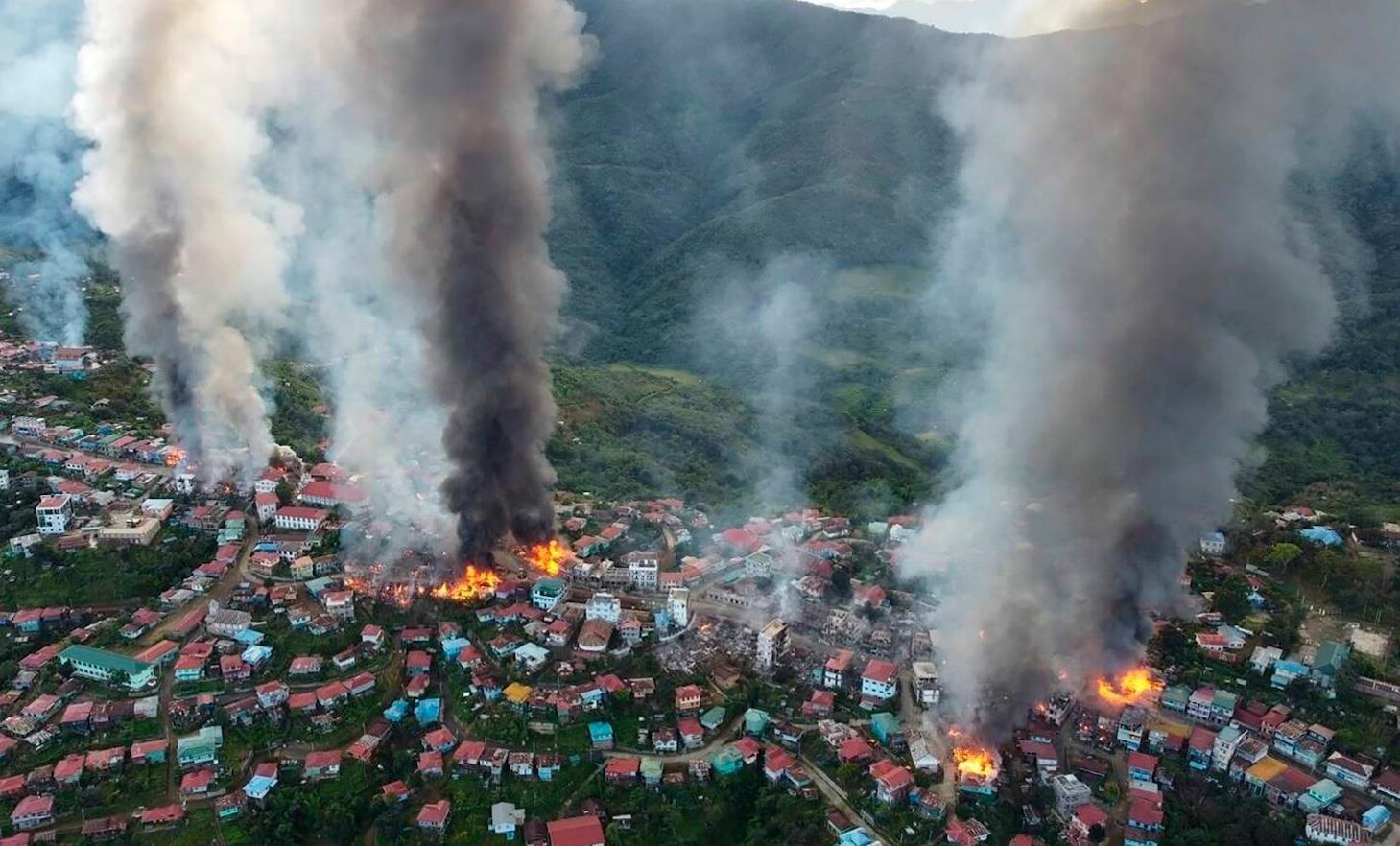















Comments
No comment